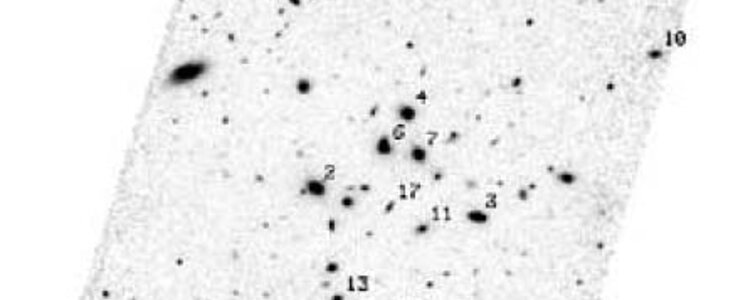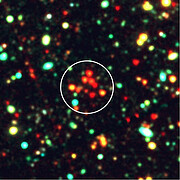Distant and Massive Galaxy Cluster Revealed in Gemini Deep Deep Survey Field
25 May 2007
Deep HST and Spitzer imaging of a passively evolving galaxy identified in the Gemini Deep Deep Survey (GDDS) has led to the detection of a very compact cluster of massive red galaxies at a redshift of z =1.51. For galaxies without emission lines this redshift is beyond the reach of most spectroscopic studies, however, the ultra-deep Gemini spectroscopy of the GDDS program detected continuum emission from the source which made it possible to establish the z = 1.51 redshift of the galaxy. Assuming that the other cluster members have the same redshift makes this one of the most distant clusters discovered to date.
Subsequent HST and Spitzer imaging uncovered 12 galaxies within 170 kpc of the GDDS target proving that the newly discovered cluster is both compact and densely populated. This suggests that several of the cluster members will likely merge to form a single behemoth galaxy by the present day.
Since galaxy clusters were rare when the universe was less than half its current age, the discovery of a well-formed cluster at such a high redshift has implications for the hierarchical models that attempt to describe galaxy formation. Indeed, finding an example like this is difficult, but crucial, to understanding the growth of structure and probing the underlying issues of dark matter and dark energy.
The GDDS is led by Pat McCarthy (Carnegie/U.S. P.I.), Bob Abraham (Toronto/Canadian P.I.) and Karl Glazebrook (Swinburne/Australian P.I.).
Links
- "A Compact Cluster of Massive Red Galaxies at a Redshift of 1.51," Patrick J. McCarthy et al., The Astrophysical Journal Letters, in press.




